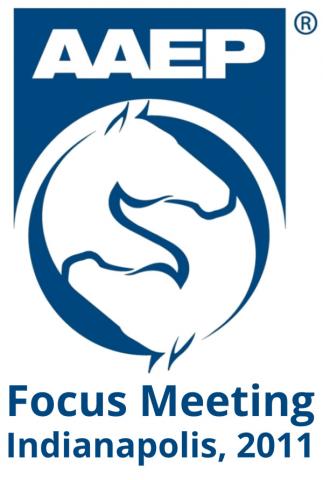Get access to all handy features included in the IVIS website
- Get unlimited access to books, proceedings and journals.
- Get access to a global catalogue of meetings, on-site and online courses, webinars and educational videos.
- Bookmark your favorite articles in My Library for future reading.
- Save future meetings and courses in My Calendar and My e-Learning.
- Ask authors questions and read what others have to say.
Evaluation of the Equine Acute Abdomen Patient in the Field: Interpretation of Historical and Clinical Findings
Get access to all handy features included in the IVIS website
- Get unlimited access to books, proceedings and journals.
- Get access to a global catalogue of meetings, on-site and online courses, webinars and educational videos.
- Bookmark your favorite articles in My Library for future reading.
- Save future meetings and courses in My Calendar and My e-Learning.
- Ask authors questions and read what others have to say.
Read
Author’s Note: Please see the appendix on page 56 that list drugs, doses indications, and author's opinion.
Take Home Message
A systematic approach to gaining and recording historical information combined with the clinical examination of the horse with an acute abdomen prior to diagnosis is necessary to optimize the outcome for the horse and client.
Introduction
The gathering and correct interpretation of client provided patient history allows the clinician to formulate an appropriate initial diagnostic plan in a timely fashion. Clinical examination findings are then interpreted in relation to the historical information. In one referral center study, there was a significant association between predicted survival and outcome based on clinical impression, and this improved with increased case exposure and clinician experience.1
History
Signalment
Age is a variable affecting outcome. In one study geriatric horses had similar admission cardiovascular statuses compared to mature horses based on heart rate, packed cell volume, plasma creatinine and blood lactate concentration, yet a more serious cause of colic was underlying.2 Aged and overconditioned horses appear to be at increased risk of strangulating lipoma. Younger horses suffer from ascarid impactions and increased rates of ileocecal intussusception. Breed has been shown to affect the occurrence of enteroliths, with Arabians and miniature breeds overrepresented in one study.3 Peripartum mares have increased incidence of colon volvulus. This reinforces the need to consider signalment of the colicking horse.
Occurrence and Potential Triggers
How often and over what time period has the colic been apparent? The duration of colic signs before presentation at referral centers has been associated with survival, with increased time before referral negatively associated with prognosis.4 Is there a pattern to the pain, or does it appear random? If female, is there any relationship to actual or perceived cyclic activity?
Management Changes
The colic episode may be related to management changes. Transport, administration of medications for concurrent conditions (antimicrobials leading to antimicrobial associated colitis, anti-inflammatories leading to right dorsal colitis), and changes in social structure by the addition or removal of other horses may be sufficient to precipitate colic. Feed or water changes or changes in intake due to iatrogenic or climatic factors may precipitate increased fecal density with secondary cecal and large colon impaction. Feeding practices also affect likelihood of colic, with sand ingestion in some areas from feeding on the ground and hay type precipitating ileal impaction e.g. Coastal Bermuda grass hay.
Fecal Production
A marked decrease in the volume or frequency of fecal production may indicate decreased dietary intake (inappetence, inability to prehend food, competition), or prolonged intestinal passage (motility disorders, obstructive processes, increased fecal density). Increased fecal volume may indicate increased feed intake, and increased fecal water may result from increased soluble carbohydrate e.g. freshly grown grass.
Pain
Severity and frequency of pain: is this an isolated or occasional problem, or are repeated episodes of colic reported? The degree of pain has been found a useful variable for the determination of survival in many prognostic models.5,6 Horses vary in their responses, so it is useful to know if this episode is consistent with other colic episodes that may have occurred previously, or is more or less severe. Response to analgesics: has the administration of analgesics changed the severity of the condition? If so, what is the duration and completeness of response to analgesics? Alpha-2 adrenergic agonists (xylazine and detomidine) have a rapid onset and may provide visceral analgesia for prolonged periods.7 Flunixin meglumine has been shown to provide less visceral analgesia, but may have a longer duration of action than the alpha-2 adrenergic agonists.7 A rapid resumption of colic signs suggests a more serious and perhaps surgical lesion.
Clinical Examination
Vital Signs
Cardiovascular parameters are found to be significant predictors of mortality in multiple studies.8-10 However, heart rate may be variably elevated due to individual tolerance to pain, and heart rate alone cannot be relied upon to predict outcome.8 When elevated, hypovolemia must be considered especially if signs of circulatory compromise are present. Also, the use of medications may alter heart rate: Hyoscine-N-butylbromide (Buscopan, Boehringer Ingelheim) leads to a profound transient increase in heart rate, this not being the result of progression of gastrointestinal pathology, rather the release of vagal inhibition of heart rate. Normal heart rate may be present in the face of significant gastrointestinal compromise.
Pulse quality can be assessed peripherally at the distal extremities or the facial artery along the mandible. Poor pulse pressure is suggestive of shock, hypovolemic or distributive shock, or cardiac compromise.11 A bounding pulse may indicate the early hyperdynamic phase of endotoxemia. [...]
Get access to all handy features included in the IVIS website
- Get unlimited access to books, proceedings and journals.
- Get access to a global catalogue of meetings, on-site and online courses, webinars and educational videos.
- Bookmark your favorite articles in My Library for future reading.
- Save future meetings and courses in My Calendar and My e-Learning.
- Ask authors questions and read what others have to say.




Comments (0)
Ask the author
0 comments